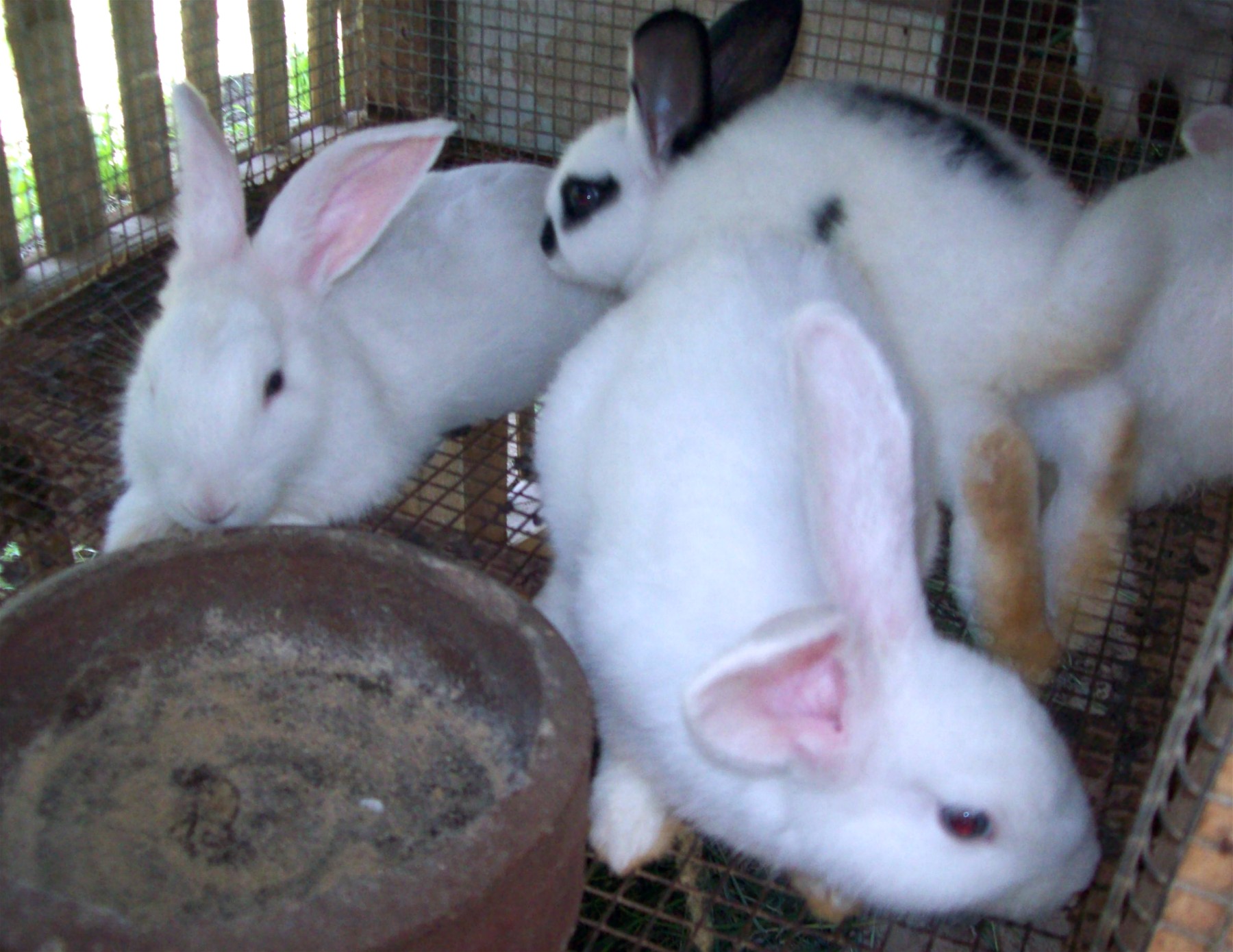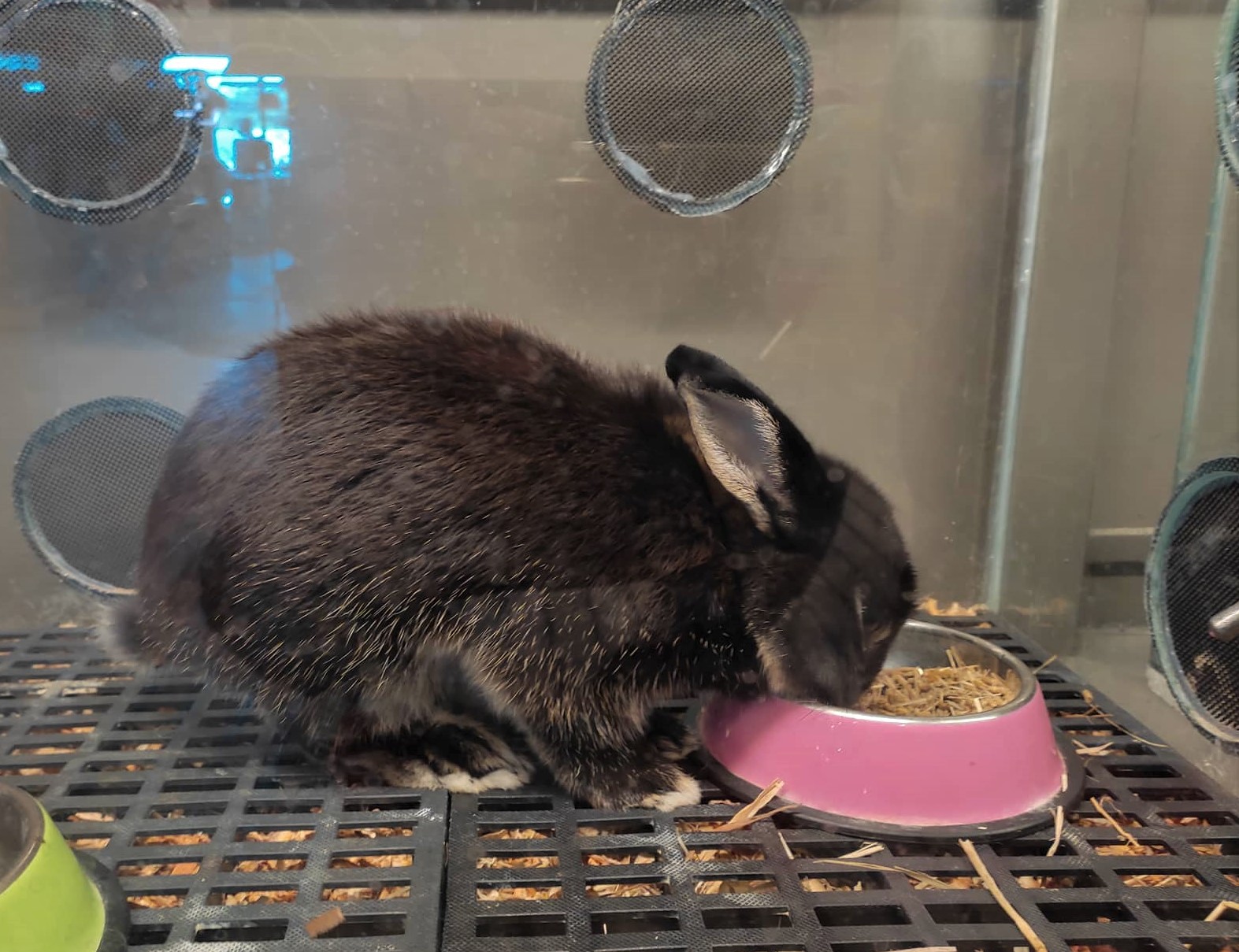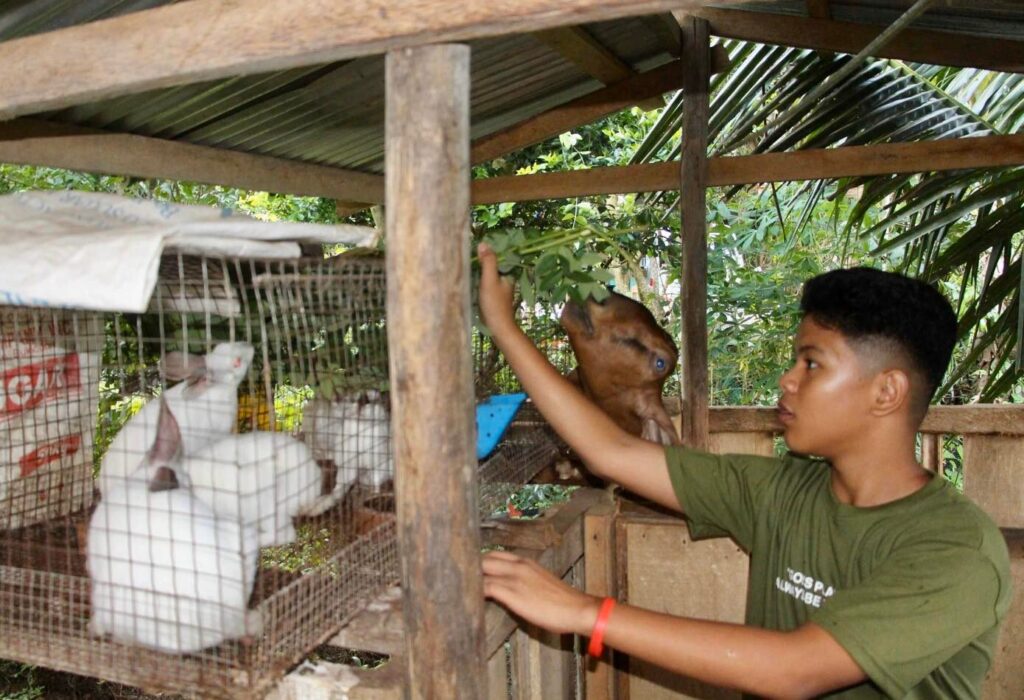By Henrylito D. Tacio
When African swine fever (ASF) hit the country at the time when the country was also experiencing the havoc brought about by the coronavirus disease 2019 (COVID-19), many people suggested raising rabbits in their backyards.
The Department of Agriculture (DA) fully supported the idea. In fact, then Agriculture Secretary William Dar told the Bureau of Animal Industry (BAI) to support the production and distribution of rabbit for meat consumption and livelihood.
“Rabbit meat can be a healthy alternative to pork,” said Dar.
Some people heeded the call. One of them is Mark Anthony L. Lawani, the municipal environment, and natural resources officer of Tarragona, Davao Oriental. “Rabbit meat is not comparable to pork,” he pointed out. “It’s better than pork.”
A former agricultural extension worker of the Mindanao Baptist Rural Life Center, a non-government organization based in Bansalan, Davao del Sur, Lawani knows the ways and means of raising rabbits.
He asked his son, Mark Timothy if he was alright with the idea. When the son agreed, they started raising rabbits in April 2020 with two does and one buck. His son took care of the management and feeding of rabbits. Before and after office work, he also tries to help his son.
When the rabbits proliferated already, he started butchering some of them as pork was unavailable or if it was being sold, the price was too high.
Some of his neighbors noticed it. There were those who thought rabbits were pets and should not be eaten. But others believe rabbits are an excellent source of protein. “I offered them a free taste of rabbit lechon and sisig; those who like it said they will buy a pair for raising,” Lawani said.
When asked if he thinks raising rabbits is a good venture, he replied: “Yes, of course, considering it only requires a little of your time and low capital investment.”
John Harvey M. Sumala, of Malaybalay City, Bukidnon, also thinks so too. But his idea of raising rabbits was not for meat but rather as a stress reliever. “Raising rabbits was my way of dealing with stress,” he said.
But this inkling changed when he learned more about rabbits from reading publications and books on the rabbitry. “I found out there are two types of rabbits: the meat type and the pet type. Based on this knowledge, I now raise rabbits for two major reasons: for meat production and for pet purposes.”
Sumala started raising rabbits at the height of the pandemic with only a pair. “It took me several months to multiply my stock as I didn’t know how to raise them properly,” he recalled.



Now, he has ten breeders who can produce at least 80-100 kittens every month. As he works as a teacher at the Kibalabag Integrated School, he asked his parents and sister to take care of his rabbits when he is not around. “But I personally raise my rabbits when I get back home from work,” he said. “And during weekends and holidays.”
Sumala believed that in order for people to eat rabbit, they need to try it first. “I let them taste for free,” he said. “During birthday celebration, we tried to serve rabbit meat as adobo, lechon and fried. Fortunately, almost all those who tried it had positive feedback. According to them, rabbit meat is almost the same as chicken.”
In the beginning, some neighbors started to raise rabbits. But most of them stopped due to the continuous increase of pellet prices and other necessities in raising rabbits,” he said. “No support from the local government was another possible reason.”
But Sumala doesn’t quit. “As of now, I’m not considering it as purely business but rather just a hobby,” he said. “I raise rabbits for our own consumption.”
He also sells rabbits through social media. “I created a Facebook page so I can advertise my rabbits,” he said. “I also posted in my own account. I likewise joined Facebook groups related to rabbit farming.”
Sumala urged people to eat rabbit meat. “To be honest, both pork and rabbit meat are delicious. But in terms of nutritional status, I would say that rabbit meat is better than pork,” he said. “Rabbit meat has the highest percentage of protein and almost zero cholesterol. It can easily be digested, too.”
More importantly, rabbit meat remains free from being infected with viruses. “Unlike pork, which was highly discouraged because of the threat of ASF. Chickens also have issues with bird flus,” he said.
Raising rabbits is one of the most simple, low-cost food production projects that a farmer can get involved in. Rabbits are easy to care for and can supply meat for the family as well as additional sources of income.
The returns from rabbit raising are quick as the life cycle of the animal is short. In just two months, a farmer will have fryers weighing about two kilograms each; in six months, he will have roasters. These can be used for the table or sold in the market.
“Although raising rabbits is a profitable venture, not too many Filipino farmers are raising them,” says Jethro P. Adang, the MBRLC director.
Most people consider it as an enjoyable hobby, not knowing that it can help pay for itself. “Raising rabbits gets in your blood,” Adang says. “Once you’ve had some good rabbits, you want to keep them around. In fact, children would cry if their father would butcher a rabbit.”
In most parts of the country, rabbit raising is concentrated only on those people bent on utilizing abandoned chicken houses and converting them into rabbit hutches. But more than that, farmers should raise rabbits in their farms. It’s also great for urban agriculture.

For those who want to raise rabbits, here are some tips from the MBRLC:
Housing: Rabbits can be raised on a small space, and they need only inexpensive equipment. For a backyard project, it is necessary to build hutches (cages). The cage should be located in a quiet place.
The rabbit house should not be built in an area where it could be hit directly by sunlight. sunlight. Nylon curtains or empty feed sacks in front and back of the cage are provided to protect rabbits from rain and strong wind. The curtains may be rolled up during the daytime when there is no rain.
Each rabbit should have at least 8 square feet of floor space, although 10 square feet is better. A good pen size is 2.5 feet long by 4 feet wide by 2 feet high. As rabbits are territorial by nature, each must be housed in a separate pen. Bucks and does must be separated.
Breeding stock: Select young rabbits, which are offsprings of prolific does, which know how to suckle or nurse their young. As for the buck, select those that are aggressive and well-developed. Both the buck and doe should be vigorous and healthy and free from any defect and diseases.
Ideally, you should start with one male and two females. It is best to buy them at two months old, right after they are weaned. If you are raising rabbits for meat, be sure to buy your breeding stock from reliable sources.
Feeding: Rabbits are voracious eaters. Their diet may consist of a mixture of legumes, grasses, camote tops, and tubers. Bean and pea leaves, kudzu, centrosema, and ipil-ipil are good sources of protein plant material, although you must be careful not to give more than 5 percent ipil-ipil. It is good to supplement with other available greens, so feel free to experiment. But minimize feeding of kangkong to your rabbits.
You will also need to feed some form of concentrate to get maximum production. Feed millers sell concentrates good for rabbits. Chicken feed can also be used. If pellets are available, they can be mixed with other kinds of feed. Give one ounce of concentrate mixed with green feeds and leftovers to a 2-month-old rabbit twice daily. Give four ounces of concentrates mixed with green feeds to more than 3-month-old rabbits.
Provide plenty of fresh, clean water and salt at all times. The rabbits drink plenty of water, especially during lactation. Feeds should be given twice a day: once in the morning and once in the afternoon.
Do not overfed your rabbits or lessen their consumption. If you give your rabbit too much, it will become fat and may have problems breeding, and if a doe becomes too fat, it is likely that she will have troubles when kindling. If you give them too little feed, then they will, obviously, become too skinny and be more prone to diseases.
Breeding: A small breed doe is normally ready to mate when she is five months old, and a buck is ready at six months. The medium size doe is ready to breed when she is six months old, and the buck at seven months. The heavy breed doe is ready at eight months, and the buck is ready at nine months.
It is very important that you take the female to the pen of the male for breeding. Do not place the male in the pen of the female. The male should serve the female two times. If the female runs from the male, restrain her or take her out and place her back with the male the following day.
In breeding, avoid the hot hours of the day. Breed rabbits early in the morning (from 5:00 to 8:00 a.m.) or late in the afternoon (from 4:00 to 7:00 p.m.). Do not leave the female in the pen overnight with the male.
Kindling: The doe gestates for 29 to 32 days. Place a box-shape next (12” x 24” x 12”) in the hutch one week before kindling. Three or four days before giving birth, it prepares its nest, sheds some of its fur for lining the nests. Do not disturb the doe during kindling. Wait 24 hours after kindling to look at the babies and to remove any that are dead.
At kindling time, the doe will be extremely nervous. As much as possible, keep children, dogs, cats and other animals away.
Care and management: When baby rabbits show signs of sickness, dissolve one-half teaspoon of Sulmet in one liter of water. Give this solution for three days. (Terramycin powder can also be used in lieu of Sulmet.)
The baby rabbits will come out of the nest box after ten days and begin to eat greens and concentrates at three weeks. After two months, they are ready to be weaned. At this time, the mother should be rebred and the young fattened to be butchered at five months.
Record keeping: It is a good idea to keep records for good management and control of the stock. The basic information which should be recorded are: age of the doe, date doe was bred, expected date of delivery, and number of young weaned per litter. You must know when to prepare the doe for kindling to prevent the loss of her young. The more you know about each doe, the better you will be able to distinguish between a quality doe and one which should be replaced.
Rabbits are not only good for their meat. They are very good producers of manure; additionally, their urine, being high in nitrogen, makes crops very productive. Their milk may also be of great medicinal or nutritional benefit due to its high protein content. Rabbit pelts are sometimes used for clothing and accessories, such as scarves or hats.

